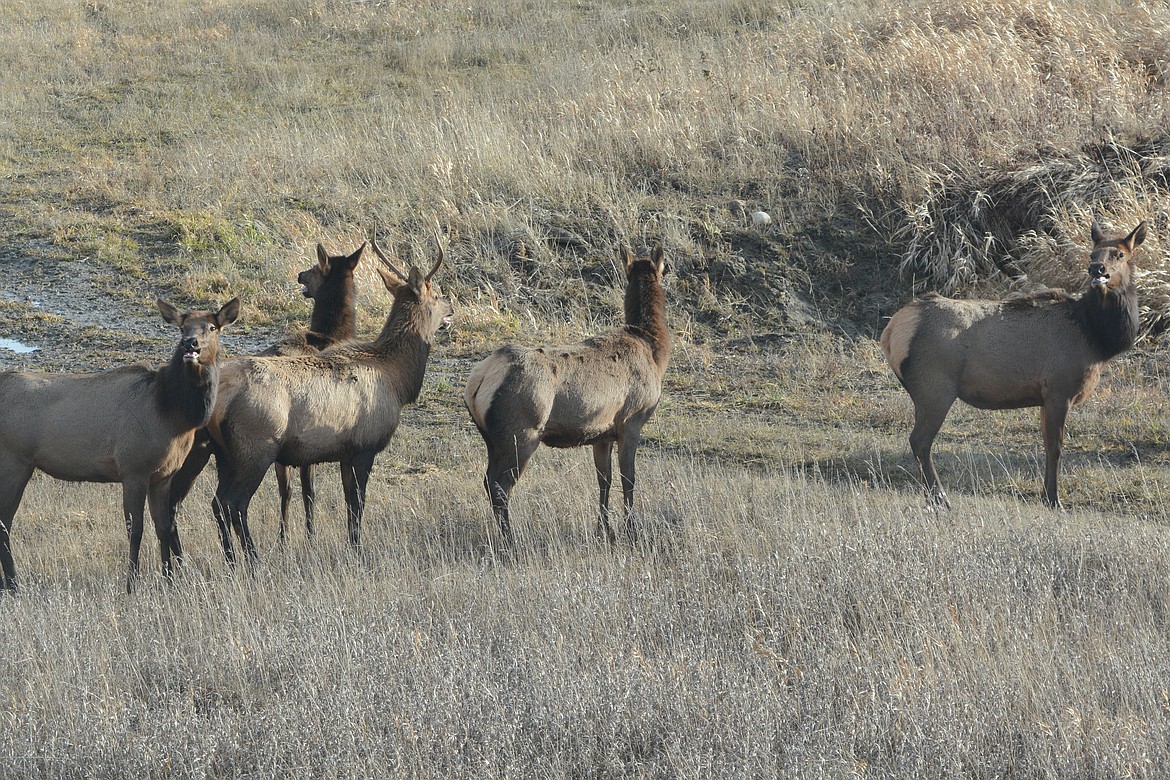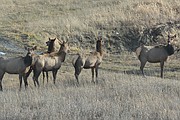Snow brings elk to the lowlands
Last week, during my travels in Boundary County, I observed approximately 76 cow and calf elk and three bulls in one large herd in the Kootenai National Wildlife Refuge, where they had been grazing most of the week.
Winter brings a crisp cold temperature, snow, freshness in the air and elk from the high mountains. They are big animals with lots of body mass that produces lots of heat. Their thick, heavy fur coat keep them warm throughout the winter.
An elk’s winter coat has two layers: a dense, woolly undercoat topped with thick, long guard hairs. Each guard hair contains thousands of tiny air pockets, making it waterproof and providing insulation. In very cold weather, snow on the thick guard hair coat often doesn’t even melt because the animal’s body heat is held in by the undercoat. Also, elk can make their hair stand on end, creating a thicker coat that traps more air.
Elk are large mammals that belong to the deer family. They are covered with a dark brown or reddish colored coat during the summer, and a light gray or yellow, dense coat during the winter. The head, neck, legs, and belly are darker than the rest of their tan body.
Elk are also called wapiti, a Native American word that means “light-colored deer.” Elk are related to deer but are much larger than most of their relatives. A bull elk’s antlers may reach four feet above its head, so that the animal can tower nine feet tall.
If you travel Boundary County looking for elk, the time they are most active is at dusk and dawn. They are strictly herbivores or plant-eaters and their diet is based on tree sprouts, grass and bark. An average adult elk consumes about 20 pounds of food per day. Natural enemies of elk are black and grizzly bear, mountain lions, coyotes and wolves.
Bull elk lose their antlers each March, but they begin to grow them back in May in preparation for the late–summer breeding season.
In early summer, elk migrate to high mountain grazing grounds where the cows will give birth. Pregnancy in females lasts 240 to 262 days. Each cow typically has a single calf, which can stand by the time it is 20 minutes old. Young elk are scentless; consequently predators have difficulty smelling them. The calves are covered with creamy spots to ensure camouflage in the early days of life when it is most vulnerable. The mother elk rejoins the herd with her calf after three weeks. Young elk stay with their mother until the age of approximately 12 months.
During the late summer breeding season the bugling of bull elk echoes through the mountains. These powerful animals strip the velvet off their new antlers, using them in violent clashes that determine who gets to mate with whom. Males with the bigger antlers, typically older animals, usually win these battles and dominate small herds.
In the winter, wapiti reconvene into larger herds, though males and females typically remain separate. The herds return to lower valley pastures where elk spend the season pawing through snow to browse on grass or settling for shrubs that stand clear of the snow cover.



